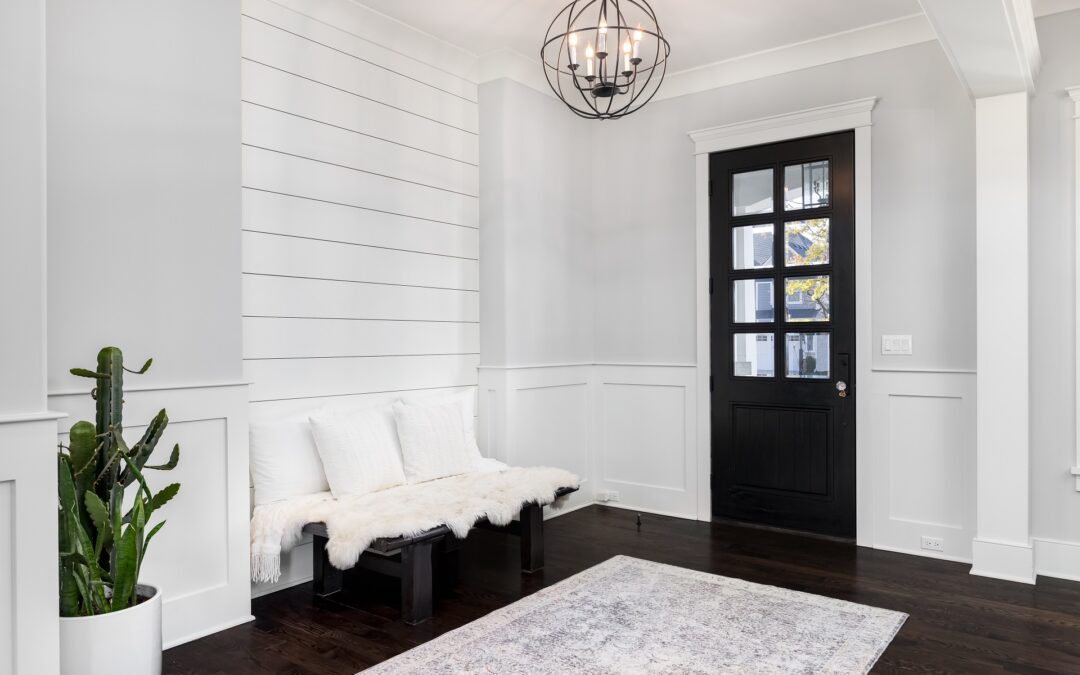Shiplap siding and penny gap wood siding (aka nickel gap) look pretty much the same once installed. However there are notable differences in how they are installed, as well as in the optimal places to install them.
At the core is how the boards join together. One overlaps, the other interlocks. Each of these joint mechanics has its own merits which makes it ideal for certain situations. Let’s take a closer look.
Shiplap Siding
- Overlapping join (L-shaped rabbet joint)
- Sheds water well as exterior siding
- Better in a hot, dry environment
- Nail holes visible
- Gap allowance is customisable
Shiplap siding boards are milled to have an L-shaped rabbet joint. This means the top board overlaps the bottom board. There are a number of benefits to this type of configuration. For instance, shiplap works exceptionally well to shed water. In fact, it gets its name from its traditional use as ship siding. So if you’re looking at an exterior siding project, choose shiplap over penny gap.
Shiplap cladding also performs well in hot, dry environments. Since wood tends to shrink in these types of conditions shiplap can shrink some but the overlapping join will still look perfectly fine. Additionally, the rabbet joint allows some customizability in the size of the gap between boards.
One thing to be aware of when using shiplap siding is the nail holes will be visible. Some quite enjoy the look for adding a delightfully rustic flair. However others prefer a smoother look. To hide them will just take a bit more work, filling them in once nailing is complete.
Penny gap wood siding
- Interlocking join (tongue & groove joint)
- Better insulating qualities
- Interlocking joins create more stability
- Hides nail holes
Penny gap siding uses an interlocking, tongue-and-groove approach, where the protruding tab on one board nestles neatly into the groove on the next. This forms a very secure, interlocking joint that provides tons of stability. Penny gap (a.k.a. nickel gap), which gets its name from the small penny-edge-size gap between the boards, isn’t recommended for outdoor use in wet environments because water can get stuck in the joints. However, what this joint does provide is superior insulation qualities, making it excellent for interior walls, floors, and ceilings.
Another plus is nail holes are hidden automatically during installation. Nails go into the tongue on one board which are then hidden when the grooved board slides overtop.
Both siding options can be finished to your liking. A popular choice is to paint them. If you like this aesthetic consider choosing a cheaper wood like pine. If you prefer to stain or leave them looking natural, opt for a handsome-looking cedar, or wood with a grain that is pleasing to your eye.
Alpine Mouldings professionally custom-mills shiplap and penny gap siding to our customer’s specifications. Come in to see our products or ask for a quote for your project. 403-627-8873omer’s
- Wood vs. Composite Mouldings: a Pros and Cons Comparison - June 23, 2025
- Creating Statement Walls with Bold Wood Panelling - May 23, 2025
- The Role of Wood Mouldings in Acoustic Design - April 19, 2025

Recent Comments